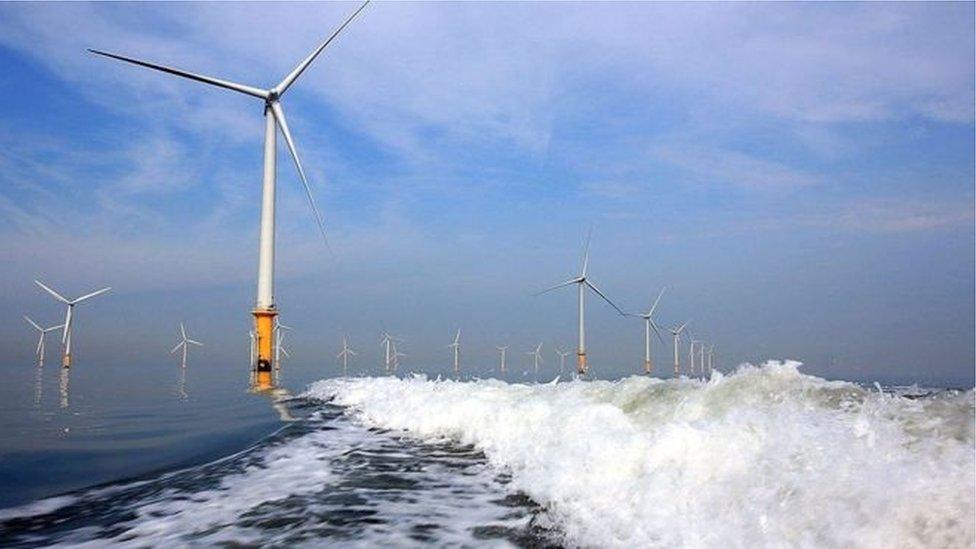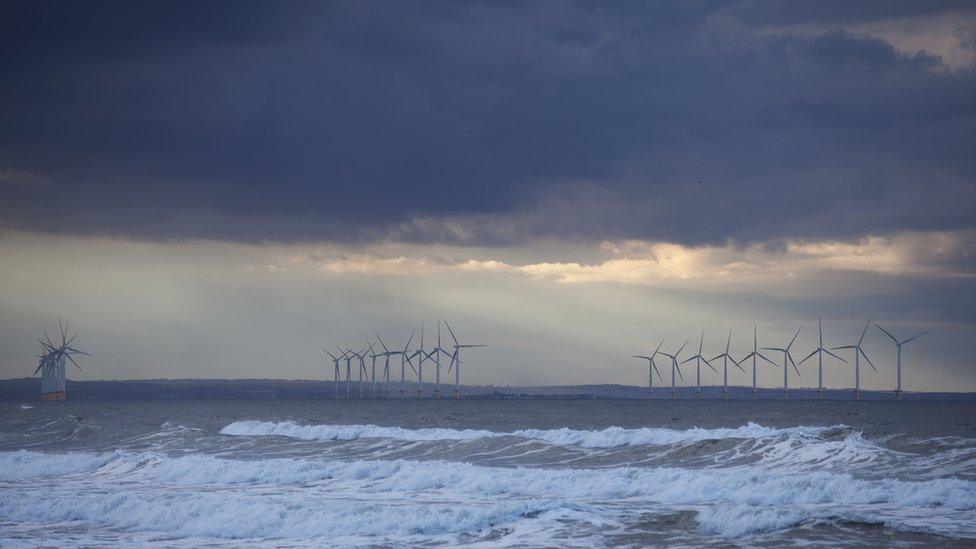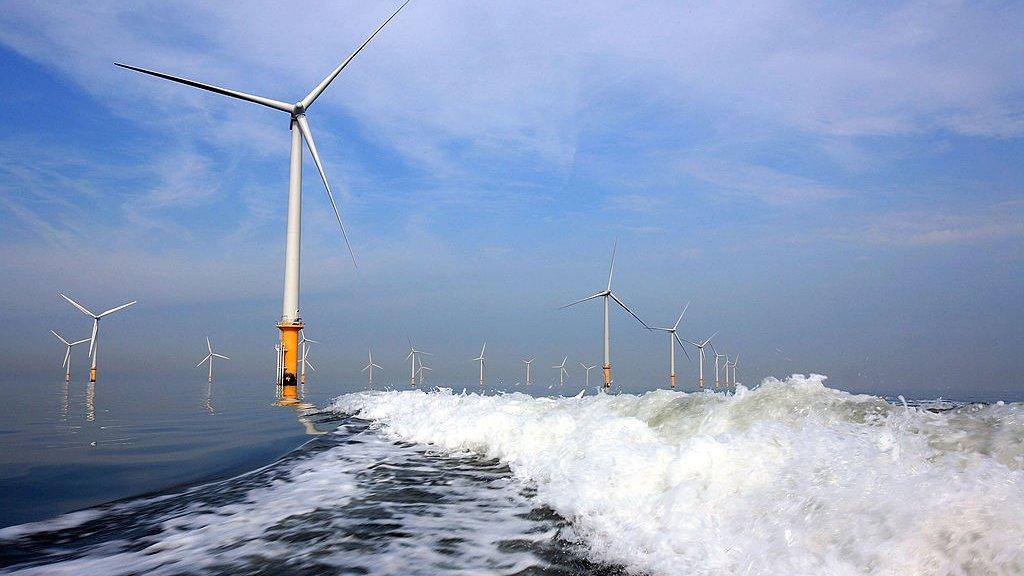Blowing away costs
- Published

The price of producing offshore wind power has plummeted. How do we know? And why?
Well, widely reported on Monday it is the result of an auction - a reverse auction.
The Low Carbon Contracts Company, which is owned by the UK government, invites bids for renewable power generators to produce a given amount of power. The power companies bid as they low as they can profitably go, and if they can produce more cheaply than others, they win a contract.
They don't have to explain how they're doing. It's enough to know that they can.
What they secure is known as a Contract for Difference. The price of a megawatt hour of power from offshore wind has fallen as low as £57.50, in the auction result announced on Monday morning. If that bidder can secure less than that in the marketplace, then the LCCC pays it the difference.
If it can secure more in the marketplace, then it pays the LCCC. For the foreseeable, the "reference price" of power - what the market determines - will be less than the strike price - the one set at auction.
But the difference - often known as the subsidy, paid through a levy on consumer bills - is narrowing. With onshore wind, it's very narrow indeed, to the point that it can almost compete commercially with gas generation.
Scale and sea swell
And why has offshore wind power fallen in cost? This is due to several key factors, according to industry experts:
Scale. The more you build, the more you order in the supply chain, and the cheaper the cost per turbine, or per tower, or per anything. Infrastructure has been put in place at ports along the east of England, which allows for the loading of very large pieces of kit. And the more turbines are connected to the wiring on the seabed, the more efficient that infrastructure becomes
Experience with installation. The more a process is repeated, the greater the efficiency. The industry is learning by doing, and applying the lessons.
Technology advance. Turbines are getting bigger, and even at the same size, they're getting more efficient. An onshore turbine used to be considered large if it had a 1 megawatt rating. The industry is now planning on 10 to 15 megawatt offshore turbines
Design. It is proving cheaper to put an offshore turbine on a four or three-leg platform, rather than one pedestal. There's less steel involved.
Maintenance. One of the unknowns about putting hundreds of very large turbines into the North Sea was how they could be maintained. Two new pieces of technology have made that much cheaper than it was: inspection by drone, and clever means of getting people and equipment on and off a platform from a ship while it pitches in quite a large sea swell. The maintenance boats necessary to do this work, and designed to hold a connecting platform steady, are now being purpose-built.
Blow the wind northerly
But there's still something missing from the offshore wind industry in Scotland: activity.
The priority for the industry has been to build where the sea is shallower, which is true of the southern North Sea. Scottish waters offer more wind, so more power, but more depth of water, so more cost.
Add to that the regulatory regime, which puts a much higher cost per unit on electricity for connecting to the grid in the north of Scotland than a connection nearer the population centres of England.
That said, the Beatrice project in the Moray Firth is moving beyond the trial phase, and coastal Fife should soon see developments.
The potential game changer is the floating wind turbine, which can be anchored in much deeper water than the arrays now occupy in the southern North Sea.
- Published11 September 2017

- Published11 September 2017
